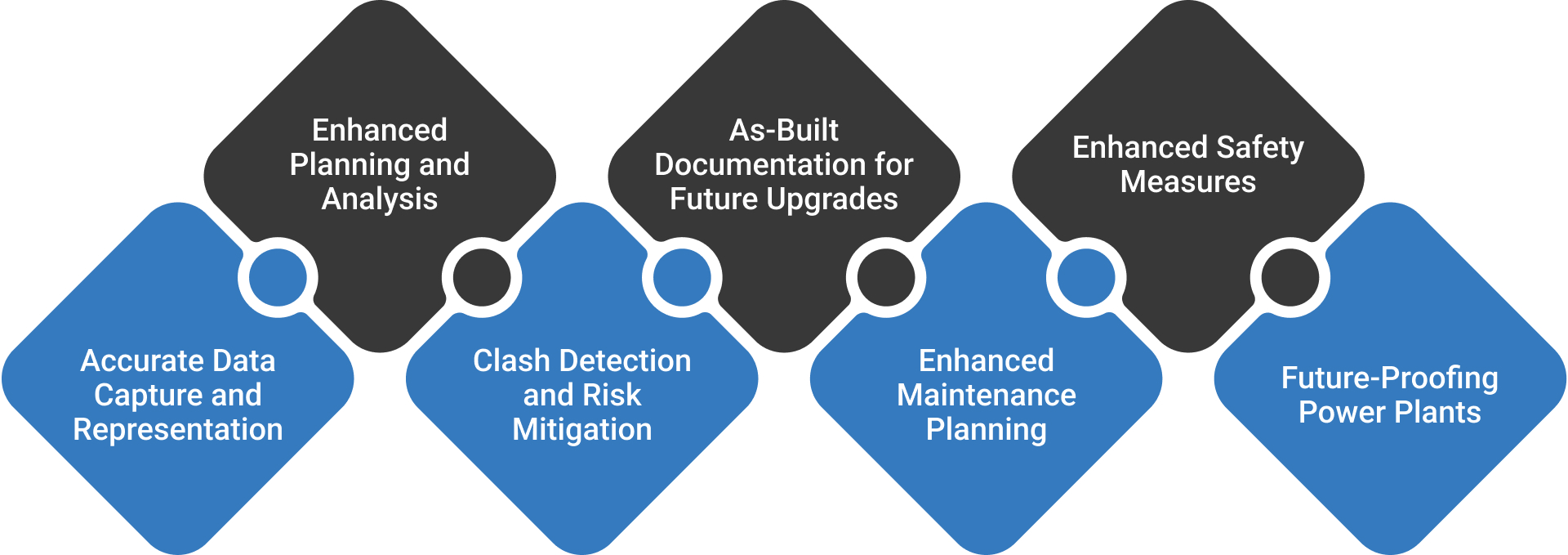As the construction industry increasingly embraces digital transformation, Point Cloud to BIM (Building Information Modeling) technology has become pivotal in enhancing MEP (Mechanical, Electrical, and Plumbing) and structural modelling. This technology captures accurate as-built conditions, enabling stakeholders to visualize and coordinate complex systems effectively. In this article, we will explore the key benefits of Point Cloud to BIM for MEP and structural modelling, illustrating how it enhances efficiency, reduces errors, and improves overall project outcomes.
Critical Benefits of Point Cloud to BIM for MEP and Structural Modeling

Accurate As-Built Documentation
One of the most significant advantages of Point Cloud to BIM technology is its ability to create highly accurate as-built documentation. In MEP and structural modelling, precise data is crucial for understanding existing conditions and making informed design decisions. Traditional measurement methods can lead to inaccuracies, especially in complex or existing structures.
With Point Cloud to BIM services, engineers and designers can capture the exact dimensions, configurations, and locations of structural elements, MEP systems, and other critical components. This accuracy reduces the risk of design errors and ensures that all modifications align with the existing infrastructure.
Enhanced Coordination and Collaboration
Point Cloud to BIM facilitates improved coordination among various stakeholders, including architects, engineers, contractors, and project managers. By providing a centralized, detailed 3D model, all parties can access the same data, ensuring everyone is on the same page. Enhanced coordination is vital in MEP projects, where systems often intersect with structural elements. The BIM model allows for clash detection, enabling teams to identify conflicts between MEP systems and structural components early in the design process. This proactive approach minimizes rework and streamlines collaboration, saving time and costs.
Streamlined Design and Planning Processes
MEP and structural engineers can create and modify designs more efficiently using Point Cloud to BIM technology. The detailed BIM model allows for quick iterations, enabling teams to test different configurations and layouts without requiring extensive physical measurements.
For MEP systems, engineers can optimize ductwork, piping, and electrical layouts to improve efficiency and functionality. Structural engineers can also analyze load-bearing capabilities and design reinforcements, and ensure compliance with building codes and standards, all of which are facilitated by the accuracy of the Point Cloud data.
Reduced Errors and Rework
Integrating Point Cloud to BIM significantly reduces the likelihood of errors in MEP and structural modelling. By providing a clear, data-rich visual representation of the existing conditions, teams can make informed design choices based on accurate information. When conflicts or issues are identified during the design phase, teams can address them before construction begins. This proactive approach helps prevent costly changes during construction, ultimately reducing rework and project delays.
Improved Project Timelines and Cost Efficiency
With enhanced accuracy, better coordination, and fewer errors, Point Cloud to BIM contributes to improved project timelines and cost efficiency. Projects can progress smoothly from design to construction by minimizing rework and delays.
This translates to faster installations and more efficient use of resources for MEP systems. Structural modelling benefits from streamlined design processes, allowing for timely decision-making and project delivery.
Better Risk Management
Point Cloud to BIM technology enhances risk management by providing detailed insights into existing conditions and potential challenges. By analyzing the BIM model, teams can assess risks associated with structural integrity, MEP system performance, and regulation compliance.
This thorough understanding allows for proactive planning and the development of effective mitigation strategies, reducing the likelihood of costly issues arising during construction or operation.
Facilitates Compliance with Regulations and Standards
In MEP and structural modeling, adherence to building codes, safety standards, and sustainability regulations is essential. Point Cloud to BIM technology aids in ensuring compliance by providing accurate, up-to-date data that can be used to validate designs against relevant regulations.
The detailed BIM model allows engineers to assess various design options for compliance with energy efficiency standards, safety codes, and other regulations, facilitating smoother approvals and inspections.
Supports Facility Management and Maintenance
The benefits of Point Cloud to BIM extend beyond the design and construction phases into facility management and maintenance. The detailed BIM model is a valuable resource for ongoing operations, allowing facility managers to access accurate information about MEP systems and structural elements.
With this data, maintenance teams can plan preventive measures, schedule repairs, and efficiently manage upgrades, contributing to the overall longevity and efficiency of the building.
Steps in Implementing Point Cloud to BIM for MEP and Structural Modeling
To leverage Point Cloud to BIM technology effectively in MEP and structural modelling, consider the following steps:
- Initial Site Survey: Conduct a detailed laser scan or photogrammetric survey of the existing structure to capture the point cloud data.
- Data Processing: Clean and process the point cloud data to remove noise and ensure accuracy. This step involves converting the raw data into a usable format for BIM software.
- Creating the BIM Model: Utilize BIM software to generate a detailed 3D model based on the processed point cloud data. Incorporate MEP systems and structural elements into the model.
- Clash Detection and Analysis: Use BIM tools to identify potential clashes and conflicts between MEP systems and structural components.
- Design Iteration: Collaborate with stakeholders to iterate on the design, ensuring that all modifications align with the existing conditions and project goals.
- Documentation and Compliance Check: Ensure the final BIM model complies with relevant building codes and regulations. Prepare documentation for approvals and inspections.
- Construction Coordination: Provide the final BIM model to construction teams, facilitating seamless communication and coordination throughout the building phase.
- Ongoing Facility Management: Update the BIM model as changes are made during construction and use it as a reference for facility management and maintenance activities.
Conclusion
Point Cloud to BIM technology is revolutionizing MEP and structural modeling approaches, providing significant accuracy, collaboration, and efficiency advantages. This technology enhances the overall effectiveness of construction projects by capturing precise data and facilitating seamless coordination among stakeholders.
Integrating Point Cloud into BIM will become increasingly essential for MEP and structural engineers as the construction industry evolves. By leveraging this innovative technology, professionals can streamline workflows, reduce costs, and ensure successful project outcomes that meet the demands of modern building practices. Whether for new constructions or renovations, Point Cloud to BIM offers a powerful solution for overcoming the complexities of MEP and structural modelling, paving the way for a more efficient and effective construction process.


Recent Comments